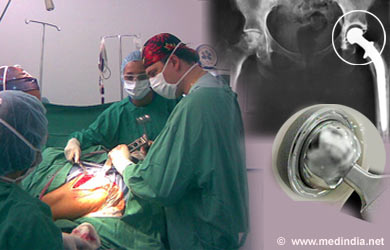- Georgetown University Hospital Joint Reconstruction Center: Total Hip Replacement: Brief Summary of Care Before and After Surgery
- Suncoast Seminars: Proposed Rehab Protocol for Total Hip Replacement
- Dancerhips.com; Surgical Hip Replacement Options; Naomi Rabinowitz, M.D., LAc
- Chico Orthopaedic Surgery & Sports Medical Associates: Hip
- McKinley Health Center: Overuse Knee Injuries
- PT Notes; Iliotibial Band Stretches: IT Band Stretches; D.K. Mangusan Jr., PTRP
- Hip Replacement Recovery: What to Expect, Timelines, Outcomes - (http://willapse.hubpages.com/hub/hip-replacement-recovery-what-to-expect-timelines-outcomes)
- Hip Replacement: - (http://books.google.co.in/books?id=y91ffirlrimc&pg=pa12&dq=hip+replacement+surgery+recovery+time&hl=en&sa=x&ei=mlgot8ram4vqrqfmmss0cq&ved=0chqq6aewca#v=onepage&q=hip%20replacement%20surgery%20recovery%20time&f=false)
- Iliotibial Band Stretch and a Hip Replacement - (http://www.livestrong.com/article/441430-iliotibial-band-stretch-and-a-hip-replacement/#ixzz1so8uwwk7)
- Recovering from Total Hip Replacement Surgery - (http://bonesmart.org/hip/recovering-from-hip-replacement-surgery/)
About
Hip joint is one of the largest weight-bearing joints of our body. When physiologically fit, it enables us to walk, sit, bend, turn, run, and climb. But when it gets affected by trauma or disease, our daily body activities become painful and restricted.

Hip joint is one of the most mobile of all the joints in the human body joining the long bone of the thigh and the small bone of pelvis. It is lined by articular cartilage which further acts as a shock absorber to the joint and cushions the joint during a weight-bearing activity. It is further supported by muscular tendons and ligaments.
The cartilage, ligaments or bony surfaces of the joint might get damaged because of repetitive stress, traumatic injury or conditions like rheumatoid arthritis, tumors, tuberculosis, ankylosing spondylitis, arthritis related to Crohn's disease, Bone dysplasias, avascular necrosis of femoral head (neck of thigh bone), etc. Any of these might lead to degenerative changes within the hip. If the temporary physiological and structural changes in the joint surfaces and the joint mobility are not taken care of and allowed to become severe, it might result in hip replacement surgery as the only option to treat the painful joint.
Hip replacement surgery is performed when the hip joint undergoes irreversible structural changes owing to the disease. The diseased hip joint is replaced with an artificial hip joint or prosthesis.
Orthopedic surgeon assesses the patient and determines the need and suitability of a hip replacement surgery based on severity of injury, degree of pain and disability, patient's age and level of hip activity, medical history and potential surgical complications.
In the hip replacement surgery, the diseased joint is replaced with an artificial joint. An incision is made and the muscles and ligaments surrounding the joint are moved away. The head of the thigh bone is replaced by an artificial ball with a stem. The acetabulum (pelvic bone ) is like a socket. This socket is replaced by a prosthetic cup which is fitted such that the prosthetic cup holds the artificial ball. The muscles and ligaments are now repaired and skin is sutured. The entire procedure takes around two to three hours.
Soon after surgery, the patient meets respiratory therapist and physiotherapist. The surgery involves a 8 to10 day stay in the hospital. The success of hip replacement surgery depends on how seriously and positively the patient follows doctor's and physiotherapist’s advice and takes necessary precautions. Not just this, the patient’s diet and exercise regimen also makes a difference in the prognosis.
After a hip replacement surgery, symptoms may appear depending on the severity of injury prior to the surgery, degree of trauma to the muscular tissue during surgery, pain relieving medication used and age of the patient. In most of the cases, patients experience hip joint swelling, pain and hip joint stiffness ranging from mild to severe. Pain might be felt in the front, back or sides of the hip, groin area, thigh, or occasionally around knee, calf, ankle or foot. Symptoms increase in case of weight bearing or in case of prolonged standing or sitting, excessive bending or twisting of the hip.
Patient initially walks with a limp which gradually decreases with the rehabilitation sessions. There may be tenderness and inflammation of the surgical scars. Initially, the hip may be weak and unstable, but gradually patient's lifestyle would get back to normal. In most cases, they will be able to resume most of their pre-surgery activities albeit due precautions.





